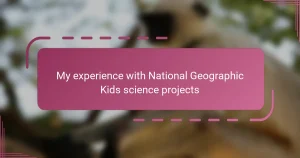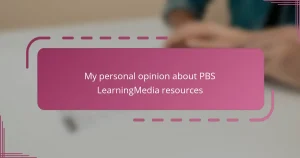Key takeaways
- Storybird combines visual art with writing, helping children express themselves and overcome writing reluctance.
- Creative writing enhances children’s emotional growth, vocabulary, and critical thinking skills while nurturing confidence through the completion of their stories.
- Storybird supports parenting by fostering children’s independence, encouraging quality bonding time, and creating a joyful learning experience.
- Encouraging experimentation and celebrating children’s efforts with positive feedback is vital for enhancing their creativity and motivation in writing.
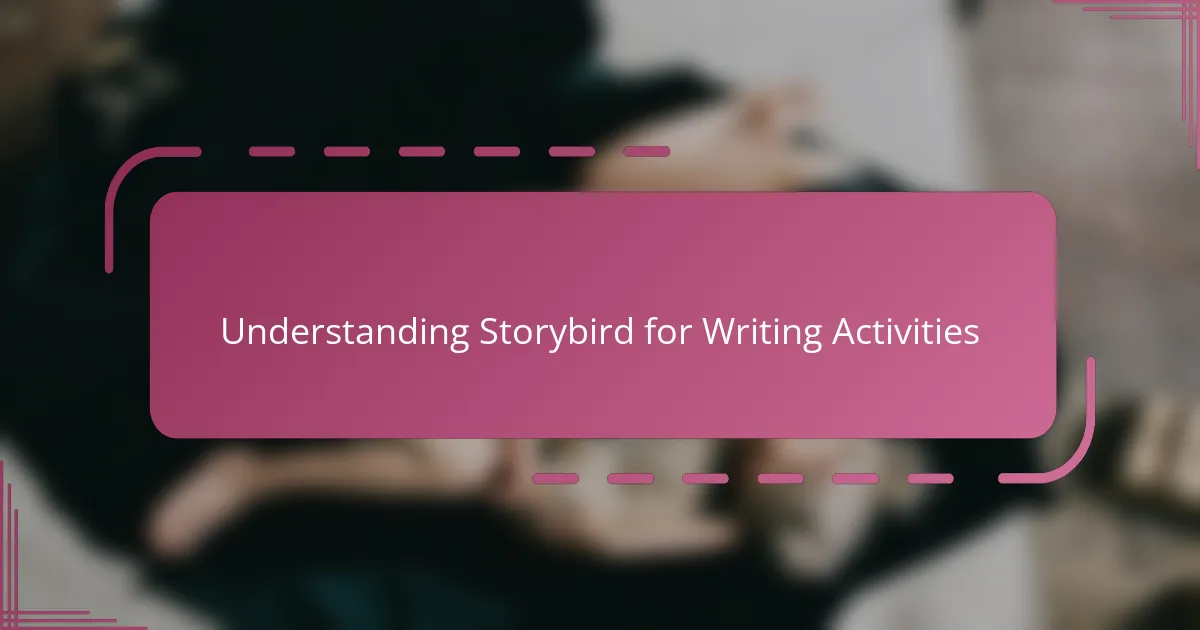
Understanding Storybird for Writing Activities
When I first came across Storybird, I was intrigued by its unique approach—it combines visual art with writing, which immediately grabbed my attention as a tool for creative writing activities. Have you ever noticed how a single picture can spark a flood of stories in a child’s mind? Storybird leverages this natural connection by allowing kids to choose images that inspire their storytelling, making the writing process feel less like a chore and more like an adventure.
From my experience, Storybird’s format encourages even reluctant writers to open up and express themselves. Instead of staring at a blank page, children interact with beautiful illustrations that guide their narratives. This visual prompt often helps to break the ice, igniting imagination and boosting confidence, which I found to be incredibly valuable for nurturing creativity.
What I appreciate most is how Storybird subtly teaches structure without overwhelming young writers. It feels more like play than work, as kids build their stories piece by piece around the images they select. This approach reflects a deep understanding of how children learn best—by engaging multiple senses and connecting emotionally with their work. Have you noticed how much more invested children become when they feel a personal connection to their projects? I certainly have.
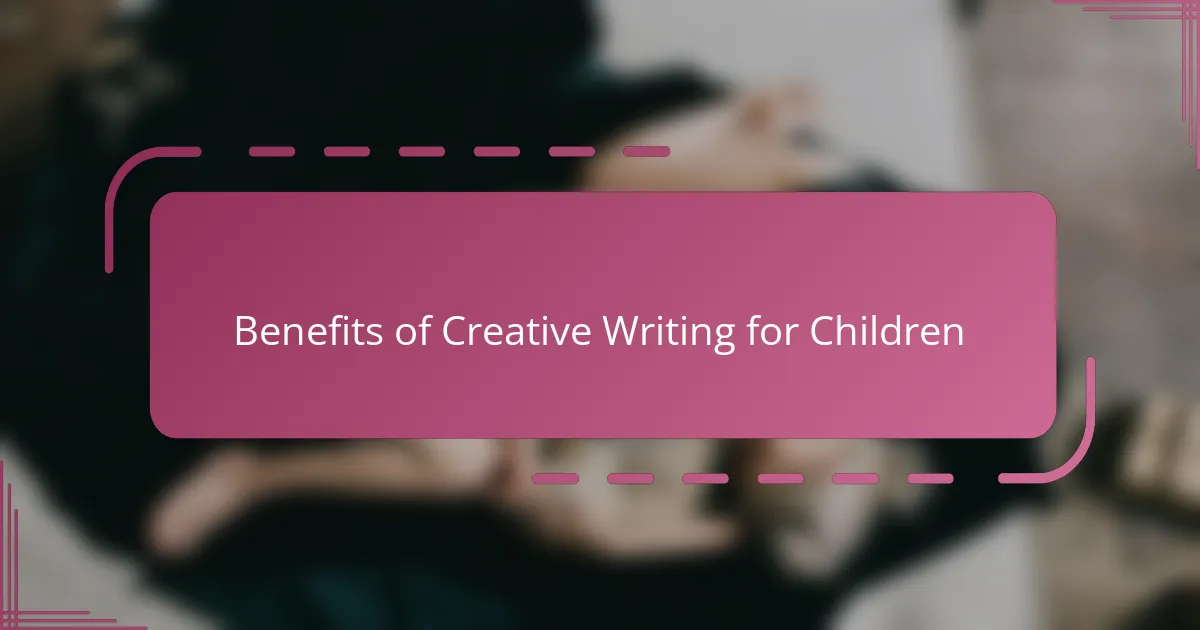
Benefits of Creative Writing for Children
Creative writing offers children a wonderful outlet for self-expression, allowing them to explore their thoughts and feelings in ways they might not otherwise. I’ve seen how putting their ideas into words can help kids make sense of their experiences, turning complex emotions into stories that feel manageable and meaningful. Isn’t it amazing how a simple story can become a mirror for a child’s inner world?
Beyond emotional growth, creative writing sharpens essential skills like vocabulary, grammar, and critical thinking. When children weave their tales, they learn to organize ideas logically and pay attention to details, all while having fun. I remember watching my own child carefully choose words to describe a scene, and it struck me how this playful process quietly builds literacy foundations.
Moreover, creative writing nurtures confidence. When children see their stories take shape and receive praise for their efforts, it fuels pride and motivation. Have you noticed how proud a child feels when they share a story that’s truly theirs? That moment of accomplishment can inspire a lifelong love of learning and creativity.
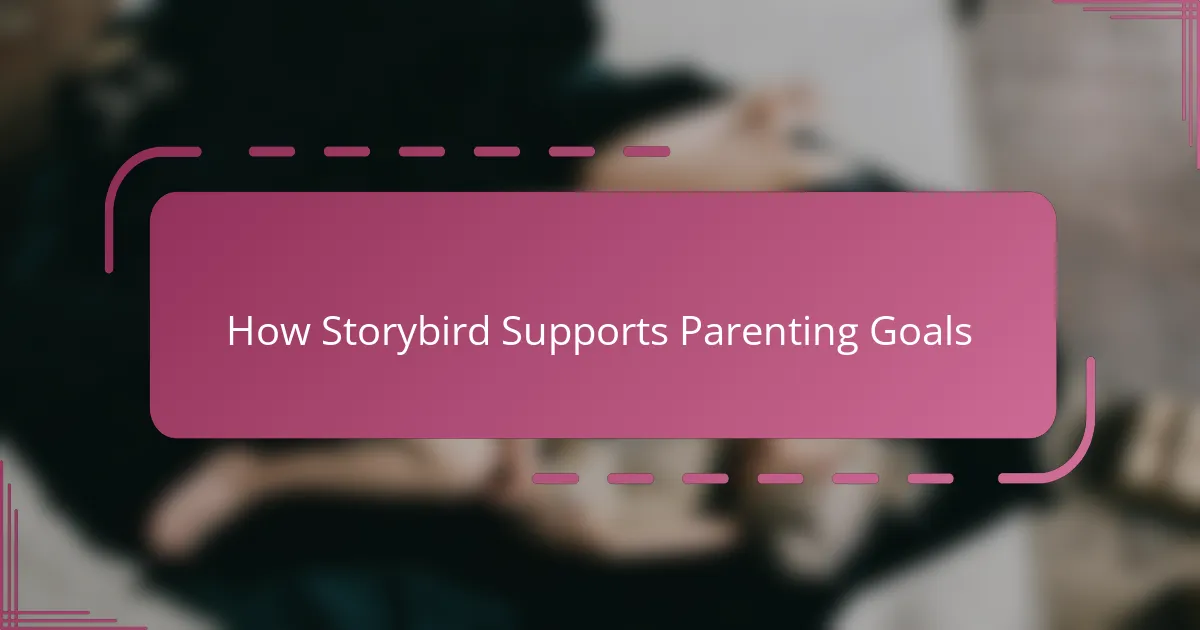
How Storybird Supports Parenting Goals
What strikes me about Storybird is how it aligns perfectly with a parent’s goal of fostering independence in kids. When my child uses Storybird, I see them make choices—not just about what to write, but how to express themselves visually and verbally. Isn’t that the kind of confidence we hope to nurture, where children feel empowered to tell their own stories?
Another way Storybird supports parenting goals is by creating opportunities for quality bonding time. I found that sitting together to explore stories sparked conversations about feelings, ideas, and dreams that don’t always come up in everyday chats. Have you ever noticed how shared creative activities open new doors for understanding your child on a deeper level?
Lastly, Storybird helps me encourage a positive attitude toward learning, especially when schoolwork feels challenging. Watching my child excitedly return to their story project reminded me how important it is to find tools that make education feel joyful rather than stressful. How often do we get to see learning and fun merge so seamlessly? This balance is exactly what I strive for as a parent.
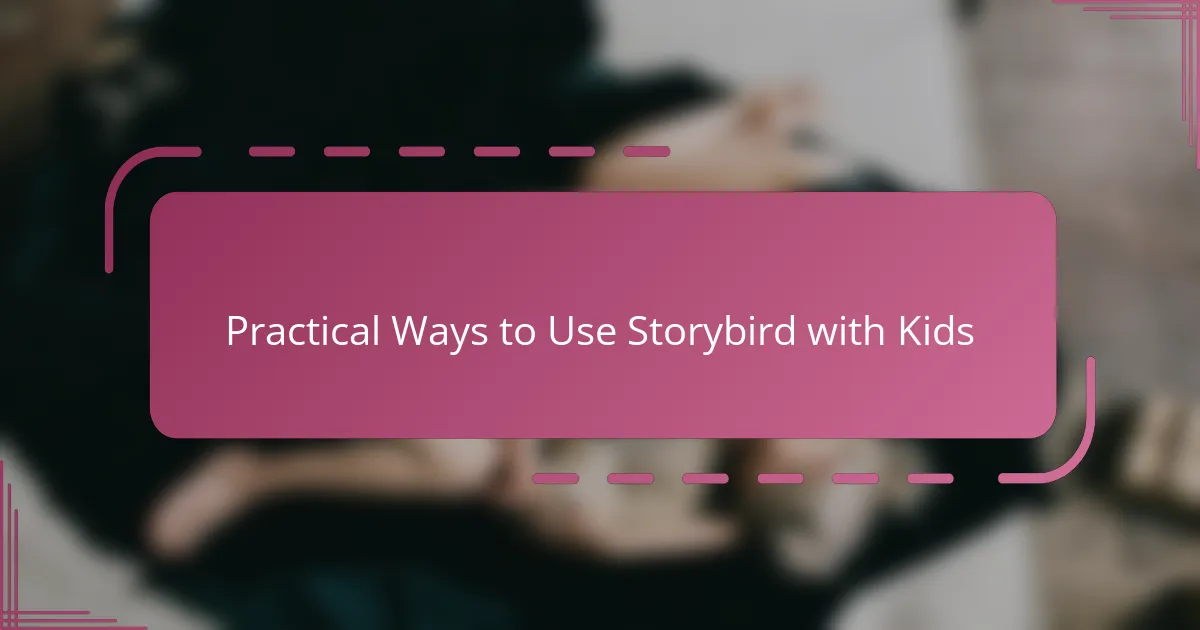
Practical Ways to Use Storybird with Kids
One practical way I’ve used Storybird with my kids is by turning it into a regular story night. We pick a theme or an image together, and then each of us creates a short story inspired by it. It amazes me how this simple routine sparks creativity and brings out stories my children never shared before. Have you tried setting aside time like this? The anticipation of seeing what each person writes really adds a layer of excitement.
Another approach that worked well for us is using Storybird as a collaborative project. My kids take turns adding sentences or paragraphs to the same story, building on each other’s ideas. This not only boosts their writing skills but also teaches teamwork and patience. I remember how proud they were to read the final story aloud, knowing they created it together. Isn’t it wonderful when learning also nurtures their social skills?
I’ve also found Storybird invaluable during homeschool sessions or rainy afternoons when outdoor play isn’t an option. It serves as a creative break that still feels educational. We often use the platform to explore new vocabulary or practice storytelling structures informally. Have you noticed how kids respond better to learning when it feels like play? For me, Storybird hits that sweet spot perfectly.
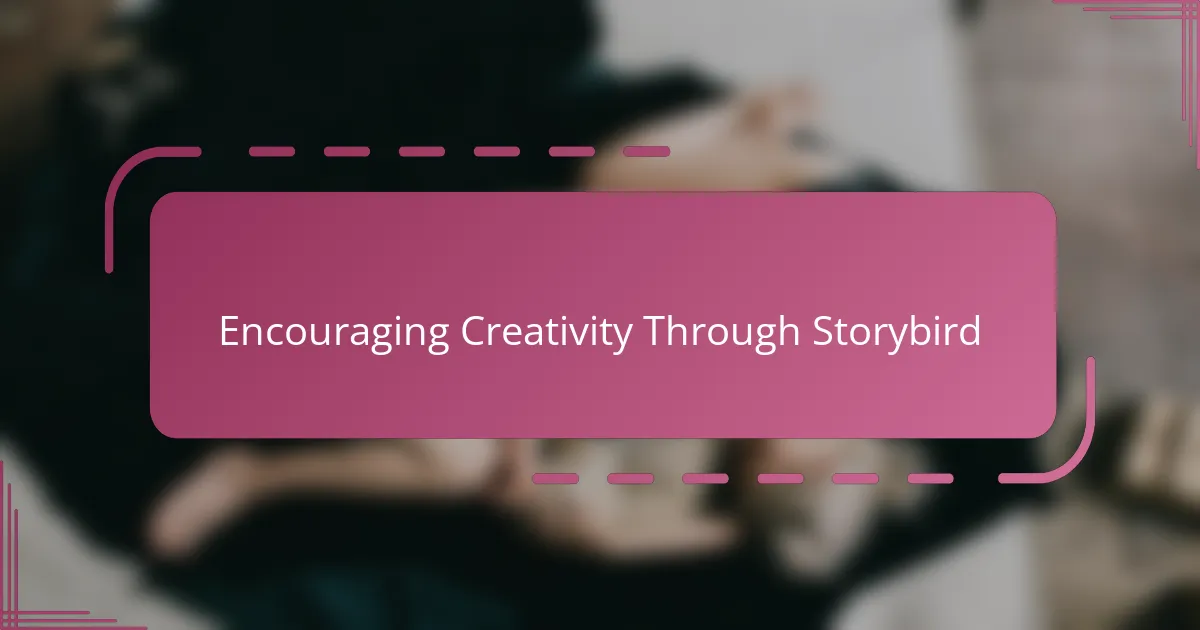
Encouraging Creativity Through Storybird
What I find truly inspiring about Storybird is how it naturally encourages kids to take creative risks without fear of making mistakes. When my child chooses an illustration and starts crafting a story around it, I see a genuine excitement unfold—a sense of freedom to explore ideas that might seem too daunting on a blank page. Have you ever watched a child’s eyes light up when they realize their imagination has no limits? That moment is pure magic in nurturing creativity.
Storybird also makes it easy for children to experiment with different storytelling styles. From poems to short narratives, the varied formats invite kids to find their unique voice. I remember my daughter trying a whimsical poem for the first time, something she wouldn’t have attempted on her own. Isn’t it encouraging when a tool gently pushes our kids beyond their comfort zones, helping them discover new ways to shine?
Another aspect I appreciate is how Storybird’s blend of art and words invites emotional expression. Children often embed their feelings within characters and plots, which can be a beautiful outlet. When my son created a story about overcoming fears, I sensed a quiet confidence building inside him. Have you noticed how creative writing sometimes becomes a healing journey for children? Storybird provides the perfect space for that delicate process to unfold.
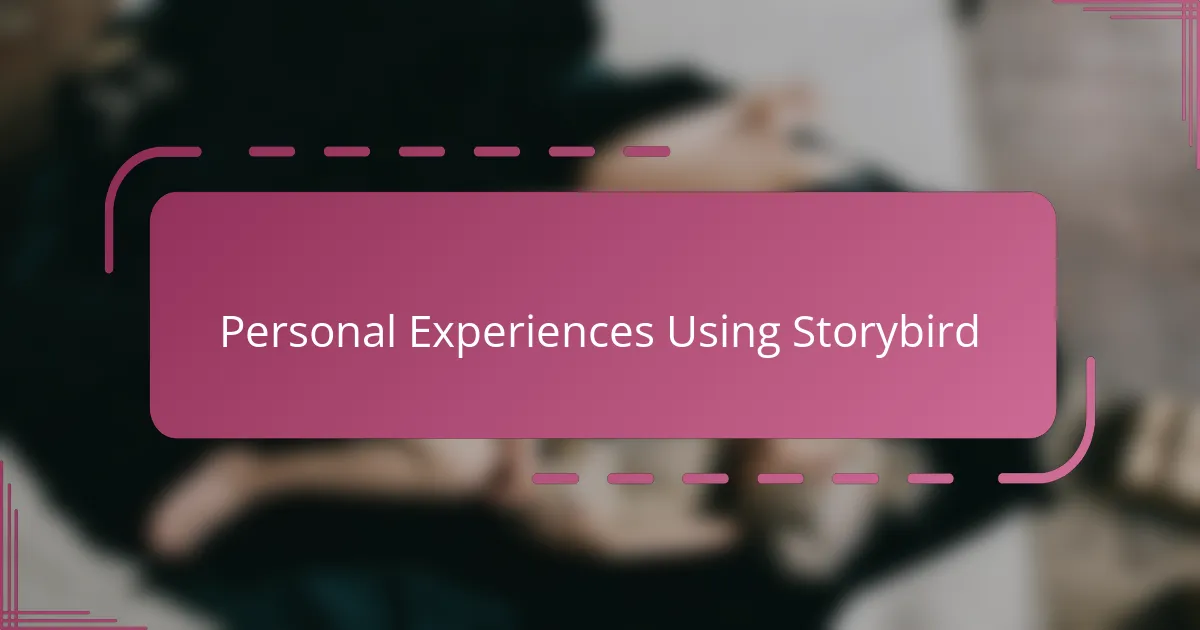
Personal Experiences Using Storybird
Using Storybird with my child has been a surprisingly joyful experience. I’ve watched as a single illustration sparked stories that revealed parts of my child’s imagination I hadn’t seen before. Have you ever been caught off guard by how vividly a child’s creativity can flourish when given the right tools? This platform seems to unlock that potential effortlessly.
One moment that stands out is when my child, usually hesitant to write, eagerly returned to Storybird day after day, choosing images and weaving tales. The confidence gained from seeing a story take shape, complete with visuals, made all the difference. It made me wonder—could this be the key to helping more reluctant writers find their voice?
Sometimes, we even share stories with each other through Storybird, turning writing into a fun family activity. Those times of collaboration deepen our bond and open up conversations I didn’t expect. Isn’t it amazing how a creative tool can bring family members closer while also nurturing a child’s literary skills? For me, that’s the true beauty of using Storybird.
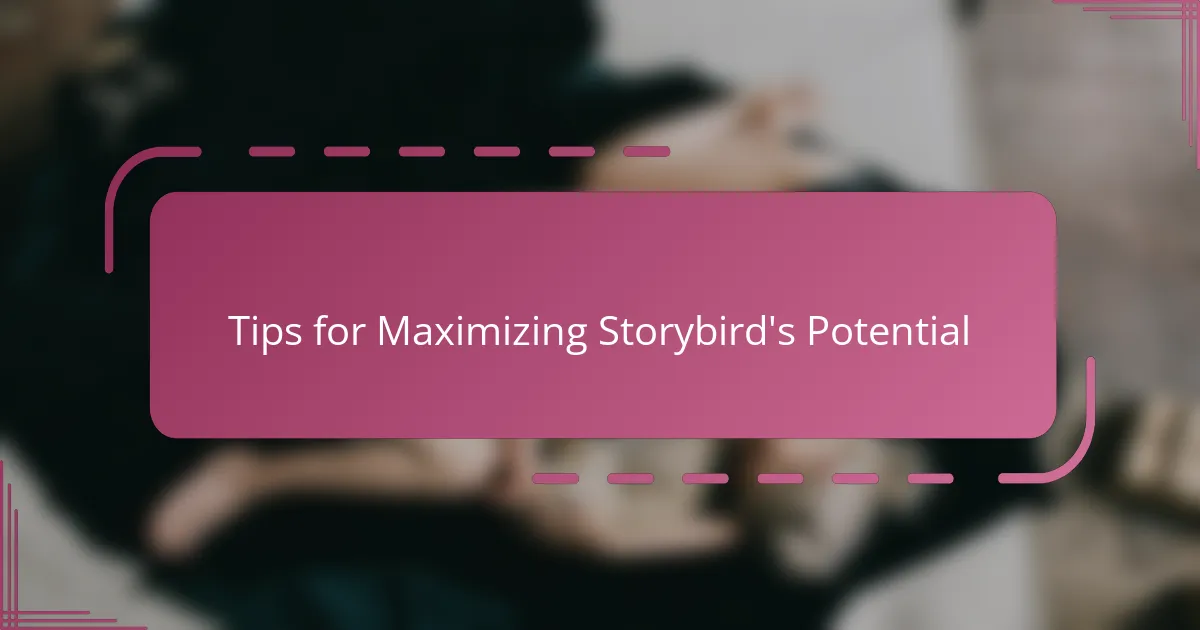
Tips for Maximizing Storybird’s Potential
To get the most out of Storybird, I’ve found it really helps to encourage kids to explore a variety of art styles and themes on the platform. When my child switched from familiar images to something completely new, it sparked fresh story ideas and pushed their creativity in unexpected directions. Have you noticed how changing the visual prompt can breathe new life into a story?
Another tip that worked well for us is setting small goals together, like finishing a story in a set amount of time or experimenting with a new genre. It keeps the process focused but still fun, turning creative writing into a manageable challenge rather than an overwhelming task. I wonder—does giving kids these little milestones help build their sense of accomplishment, too?
Lastly, I always make sure to celebrate the stories, no matter how simple or complex they are. Praising effort rather than perfect grammar nurtures confidence and keeps the creative spark alive. Have you experienced how positive feedback can transform a hesitant writer into someone excited to share their next story? For me, that encouragement is the glue that holds the whole experience together.

